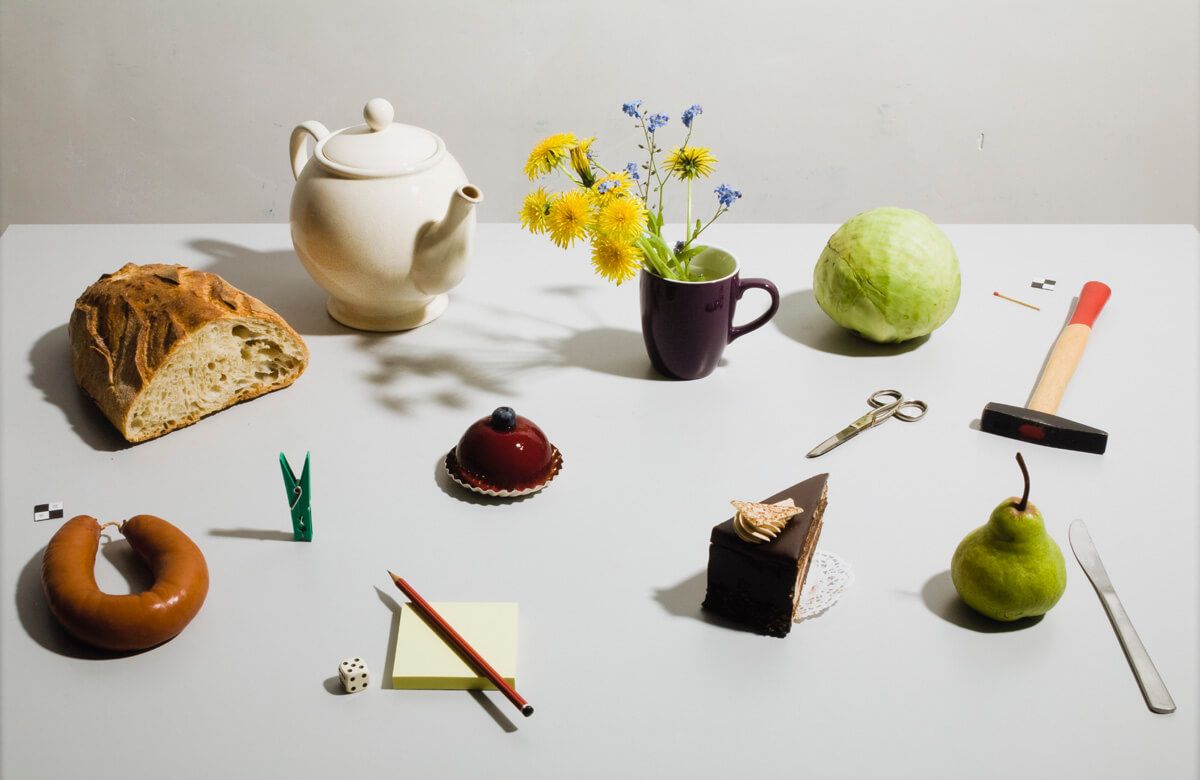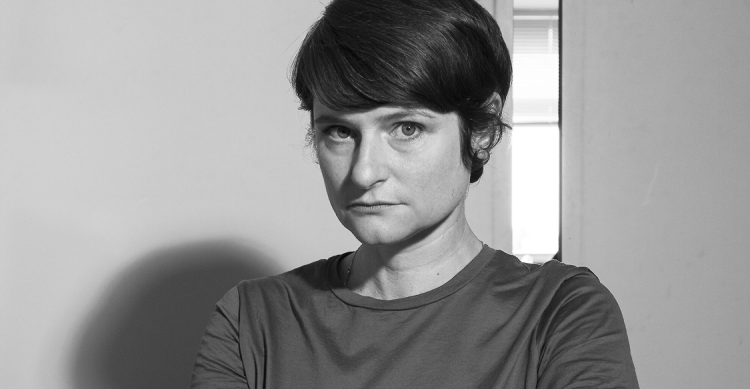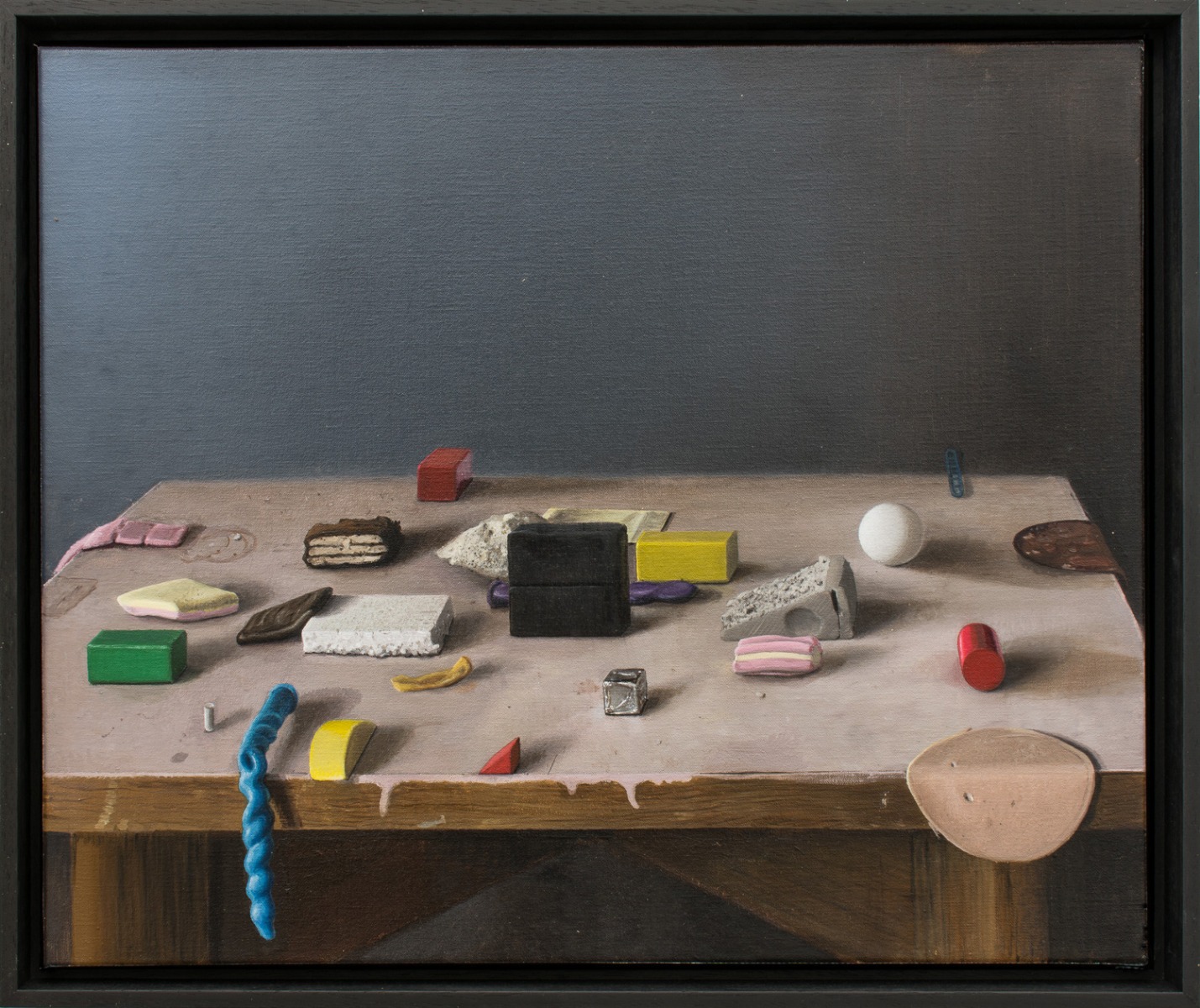

Uta Eisenreich
Spot the Difference 1

A fan of sausage?
A smoked sausage, a blueberry tart, a chocolate cake, and a pear: which snack makes your mouth water? Over 60% of people prefer savory snacks over sweet ones.
Her own system
Uta is working on her own language. It doesn't have letters; it's composed of symbols. It is partly based on the idea of hieroglyphics, the Egyptian writing system. Each part of her photos stands for a sound or a word. You can make up your own story from what you see.
Puzzle
Uta's photos have been called 'riddle art’ because what each object actually means is a mystery. Perhaps you can shed some light on the meaning of her photos.
Duality
Among other things, Uta's work focuses on the meaning of the objects in her photographs. The objects often don't represent just one thing in particular but have a double meaning. A person sees something, like this artwork by Uta. However, the way in which that person – you, for example – looks at the objects and then creates an image of them in their head is what’s important for Uta. Much of it is about play and humour, both of which only happen when you think about what you see.
Special paper
The photos are printed on baryta paper, special photo paper coated with a layer of barium sulphate: a compound comprising miniscule particles. Barium sulphate ensures that the photographic emulsion – the layer of light-sensitive material on film – doesn't sink into the paper. The white layer of ambrite makes it easier to give the paper different textures, creating a more beautiful photo.
Your explanation
Interpretation often plays a role in the visual arts. By interpreting, we are attempting to provide an explanation for something. Your interpretation is how you perceive a particular thing: in this case, how you explain Uta's photographs. What do you think the photos are saying?
Book language
For those who are into art critics: Uta is certainly an artist that art experts like to write about. They use all kinds of words that really twist your brain. They say that Uta works with semiotics, the language of signs. The word 'semantics', or the study of the meaning of symbols, is also often used.
Cake and dice
We often understand how things are related to each other: shaving cream and a razor, a fruit bowl with oranges and so on. When you look at this photo, you see all kinds of things. You get why a round cake and a somewhat larger slice of cake would be next to each other. They are both delicious treats and look very appealing. But what's a clothes peg doing next to half a loaf of bread?
The meaning of beauty
Uta's images make you think about beauty. She creates appealing images. Actually, she asks the question: to what extent does beauty have meaning? That is a big question and there is so much you could say about it.
Good and evil
In many cultures, there's a relationship between the beautiful and the good, which has meaning in itself. The devil is portrayed as ugly, whereas Mary, Jesus and the angels are beautiful.
Healthy
Beauty is also linked to health. Healthy, young people are beautiful, just like fruit and blooming flowers.
Does beauty make you lazy?
Joseph Kosuth (1945) is a US artist. He believes that art has nothing to do with beauty. He's not the only person who thinks so. Some think beauty is lazy. They feel that it's the opium of the people, just like religion. Something that intoxicates the masses and stops them from thinking properly. The moral of this idea is that beauty belongs with the sensual, the body. In effect, such people believe that beauty relaxes you too much, whereas ugliness provokes, it stimulates thought and a zest for work.
Contemplation
Artists often use beauty to captivate the observer so that they take time to enjoy a work of art. The artist hopes that this will lead the viewer to discover the idea behind it.
Exactly the right moment
Uta's still lifes are taken with great precision and from exactly the right angle. They give the impression that the click of the camera was at exactly the perfect moment, as if the objects had been sitting there waiting for that split second to arrive.
Dandelions as medicine
Dandelions are visible in both of Uta's photos. The dandelion has medicinal properties. It first appeared as a medicine in seventh-century Chinese books. While the Chinese mainly use the flower to treat liver diseases, it also contains a substance that promotes digestion. The dandelion has officially been a medicinal herb since the sixteenth century. In the lean years of the Second World War, people ate dandelions as a wild vegetable.
Where the light stops
Shadows can serve to emphasise that things are present. They play an important role in photos and paintings. There are various artworks on this wall in which this can be seen. Seventeenth-century still lifes feature shadows, as do modern works. Take a look at Michael Kirkham's painting, for example, with the sweets on the table. It's teeming with shadows.

Dark and light
A dark background creates a very different atmosphere to a light one, which is clear from Uta's photos. Museums often choose to have white rooms. White is good for highlighting artworks. White doesn't suffer from a bad image. The idea is that with a white environment, the art can speak for itself. A black environment makes things seem smaller. You can compare the effects that dark and light have in these photos by Uta.
Artists used this to create depth in the painting. But they also did it to show that they were very good at painting different tex



